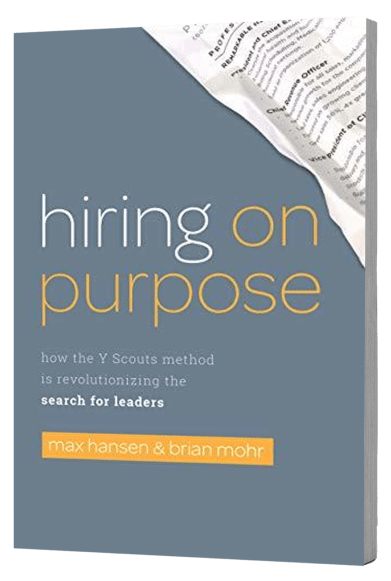The hiring process for a new C-level leader for your company is like buying a new car. If you jump into a purchase, skip the research, or let the salesperson determine your choice, you’ll probably find your new vehicle falls short of success. You might spend lots of money on repairs or struggle with expensive monthly payments. It might run fine but lack the seats, storage, or gas mileage to meet your needs.
Companies recruiting CEOs and other executives are often in the same boat as a car shopper. If the hiring process prioritizes speed over quality, overestimates technical competence, or ignores cultural alignment, they won’t find a leader to drive long-term success. Instead, their misguided executive search damages their reputation, company culture, and bottom line.
Table of Contents
ToggleWhen the Leader Doesn’t Fit
You might not measure the values, collaboration, and trust in your quarterly metrics, but in car speak, your culture is the framework or chassis for your company. If it gets bent out of shape, all the other parts of the vehicle fall off. One executive who is too authoritarian, passive, or simply tone-deaf smashes the structure of your business.
Take the disastrous two years after JCPenney hired CEO Ron Johnson. According to Harvard Business School marketing expert Rajiv Lal, Johnson’s bold strategies to improve the company’s visibility and sales clashed with the brand’s identity.1 He left after sales continued to drop by 25%. The culture conflict caused by a misguided executive hire knocked the department store into deeper trouble.
You might not see the same dramatic drop in sales as JCPenney, but every business without a sound cultural foundation sees damage. The departments in your company may begin to isolate themselves as trust erodes. Or morale may take a hit, and long-standing employees may start to disengage. In some way, your company will feel the pain.
What’s worse is that this cultural disconnect isn’t often visible on paper. Credentials and skills don’t reveal emotional intelligence or leadership compatibility. Johnson, for example, had a good track record of leadership and a solid strategy for improving operations at JCPenney. But he still missed the mark as CEO.
That’s why the best CEO recruiting firms go beyond just resumes. They use tools for assessing values alignment to protect against a leader who doesn’t fit.
When Vision Goes Off Track
Every executive brings a vision. But if that vision isn’t in sync with your organization’s current trajectory, you’re setting up a tug-of-war instead of a partnership. A hiring process without an appropriate focus on your company’s direction may result in a new leader who adds confusion instead of momentum.
This damage is particularly risky during growth phases, mergers and acquisition transitions, or strategic pivots. An executive who pushes initiatives that conflict with your goals or creates their own agenda at these key moments can completely derail your progress.
The longer your executive search is misaligned with your market, customers, or goals, the more difficult and expensive it becomes to correct. Getting your vision back on track starts with intentionally hiring leaders with a shared and supportive direction.
When a Bad Hire Costs Millions
Replacing an executive isn’t just inconvenient—it’s expensive. The Society for Human Resource Management found that hiring a new employee costs three to four times the salary for that position or as high as 30% of their first year’s wages.2 Adding in recruiting fees, relocation costs, onboarding investments, and lost productivity, each executive hire costs you millions of dollars.
Hiring costs aren’t the end of the financial fallout. Poor decisions at the top trickle down into missed revenue targets, failed product launches, disrupted team performance, and dissatisfied customers. In many cases, the damage lingers long after the executive has left.
Suppose you replaced your CMO after 14 months. But their changes to your brand drove away new and current clients. It may take two to four years for your perception and revenue to recover. That’s a costly way to learn that you need a rigorous, data-informed executive search for your next chief marketing officer.
When One Leader Drains Your Talent
When you bring in an executive who lacks empathy, fails to communicate, or dominates without listening, your top performers start looking for exits. It’s rarely about compensation or workload. It’s about trust. If your talented team members lost that trust because of a bad hire, they’ll take their knowledge and skills elsewhere.
Once key leaders and employees leave, the dominoes fall quickly. You have a secondary hiring crisis on top of finding another executive to replace the leader draining your company’s talent. And rebuilding a depleted and fractured workforce often takes years, not months.
When Your Reputation Suffers
In the age of transparency, leadership missteps show up on employee review sites, press mentions, company rankings, and social media. If a misguided executive behaves unethically, makes public blunders, or clashes with your company values, your reputation and public perception can flip faster than a Ferrari goes from 0 to 60.
Reputational damage can affect your ability to attract talent, close deals, negotiate with vendors, communicate with stakeholders, or retain loyal customers. While PR firms can help with cleanup, no one can control public opinion or predict how long the damage will continue to hurt your company.
Prevention is the best medicine when it comes to your reputation. An executive search process focused on personal integrity, values alignment, and long-term vision over short-term wins protects your company at the highest leadership levels.
How to Realign Your Executive Search
Luckily, a realigned executive hiring process helps you avoid the pitfalls of a bad executive hire. Instead of relying on resumes, job postings, and gut feel, use expert executive search services to find the transformational leader who will drive your company forward.
The best executive search firms use techniques like:
- Leadership DNA modeling: to define what leadership looks like according to stakeholders at your company.
- Role defining process: to identify critical outcomes for candidates to be successful.
- Behavioral assessments: to evaluate emotional intelligence, leadership skills, adaptability, and decision-making.
- Covert discovery methods: to uncover top-tier talent even if they aren’t actively job-hunting.
- Culture-alignment tools: to ensure candidates share the same values and vision that drive your organization.
Invest in the Process
Executive hiring requires rigor, honesty, and an unrelenting commitment to alignment. There is no shortcut. You can either put your time, effort, and money into your recruitment process now or organizational repairs later. Invest in an aligned and rigorous executive search to protect your culture, your strategy, and your future.
1library.hbs.edu/working-knowledge/what-went-wrong-at-j-c-penney
2shrm.org/labs/resources/eliminating-biases-in-hiring–structured-interviewing-and-ai-solutions



